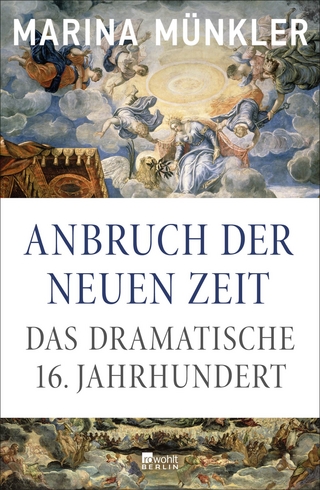
Scientific and Medical Knowledge Production, 1796-1918
Routledge (Verlag)
978-0-367-44386-3 (ISBN)
Increasingly, critics accused practitioners of hiding hubris behind their purported humanity and questioned whether an increasingly professional scientific community could retain its grip on the meaning of compassion. This volume presents a set of responses to this criticism and others, showing the extent to which the lived-experience of scientific practice became a justification in and of itself for the expression of social, political and cultural authority. Bare knowledge, as it was presented, came with an enormous social valuation. These sources show how that authority changed and grew over time.
Rob Boddice, PhD, FRHistS, is Senior Research Fellow at the Academy of Finland Centre of Excellence in the History of Experiences, Tampere University, Finland.
Volume III - Authority
Acknowledgements
General Introduction
Volume III Introduction
Part 1. Physiognomy
1. Johann Caspar Lavater, Physiognomy; or the Corresponding Analogy between the Conformation of the Features, and the Ruling Passions of the Mind (London: H.D. Symonds, 1800), 1-22.
2. Henry Crabb Robinson, translator’s preface to Some Account of Dr Gall’s New Theory of Physiognomy, founded upon the Anatomy and Physiology of the Brain, and the Form of the Skull. With the Critical Strictures of C.W. Hufeland (London: Longman, Hurst, Rees, and Orme, 1807), i-ix.
Part 2. Medicine
3. Charles Darwin to H.E. Litchfield, 4 January, 1875. Darwin Correspondence Project, ‘Letter no. 9799’.
4. Association for the Advancement of Medicine by Research, Memorandum of Facts and Considerations Relating to the Practice of Scientific Experiments on Living Animals, Commonly Called Vivisection (London, 1882), 1-14.
5. John Simon, ‘An Address Delivered at the Opening of the Section of Public Medicine’, British Medical Journal, 6 August, 1881, 219-223.
6. Walter Bradford Cannon, ‘Medical Control of Vivisection’, The North American Review, 191 (1910), 814-21.
Part 3. Biology
7. Charles Darwin to Henry Fawcett, 6 December, 1860. Darwin Correspondence Project, ‘Letter no. 3012F’.
8. Charles Darwin to George Bentham, 1 May, 1868. Darwin Correspondence Project, ‘Letter no. 6154’.
9. Thomas Lauder Brunton to Charles Darwin, 2 November, 1874. Darwin Correspondence Project, ‘Letter no. 9705’.
Part 4. Physiology
10. John Burdon Sanderson, et al., Handbook for the Physiological Laboratory (London: J. & A. Churchill, 1873), I, vii-viii, 245, 341-53; II, plate LXXXIX.
11. United Kingdom Parliament, Report of the Royal Commission on the Practice of Subjecting Live Animals to Experiments for Scientific Purposes [Royal Commission on Vivisection], C. 1397 (1876), testimony of Emanuel Edward Klein, 28 October, 1875, plus correspondence with Klein in the appendix, 182-9, 326-7.
12. George John Romanes, letter to The Times, 25 April, 1881.
13. Ernest Henry Starling, Elements of Human Physiology (London: J. & A. Churchill, 1892), 1-2, 29-31.
14. Ivan Pavlov, The Work of the Digestive Glands (London: Charles Griffin, 1902), ix-x, 91-2, 172-86.
15. Harold C. Ernst, Animal Experimentation; A Series of Statements Indicating Its Value to Biological and Medical Science (Boston: Little, Brown, 1902), 166-76.
16. Ernest Henry Starling, The Croonian Lectures on the Chemical Correlation of the Functions of the Body: Delivered before the Royal College of Physicians of London on June 20th, 22nd, 27th & 29th, 1905 (London, 1905), 3-35.
17. Charles Scott Sherrington, The Integrative Action of the Nervous System (New York: Charles Scribner’s Sons, 1906), 1-35, 240-8, 307.
Part 5. Chemistry
18. Horace Wells, A History of the Discovery of the Application of Nitrous Oxide Gas, Ether, and Other Vapours, to Surgical Operations, (Hartford: J. Gaylord Wells, 1847), 5-14.
19. Auguste Laurent, Chemical Method, Notation, Classification, & Nomenclature (London: Cavendish Society, 1855), ix-xvii.
Part 6. Eugenics
20. Francis Galton, English Men of Science: Their Nature and Nurture (London: MacMillan, 1874), 253-60.
21. Karl Pearson, National Life from the Standpoint of Science (London: Adam and Charles Black, 1901), 33-45.
22. Francis Galton, ‘Eugenics: Its Definition, Scope, and Aims’, American Journal of Sociology, 10 (1904), with entries by Karl Pearson, Walter Frank Raphael Weldon, W. Bateson, C.S. Loch, 1-7, 9-10, 23-5.
23. Francis Galton, Probability, the Foundation of Eugenics (Oxford: Clarendon, 1907), 1-13.
24. Karl Pearson, The Life, Letters and Labours of Francis Galton (Cambridge: Cambridge University Press, 1914), I, 56-61, 110.
Index
| Erscheinungsdatum | 20.07.2023 |
|---|---|
| Zusatzinfo | 2 Tables, black and white; 13 Halftones, black and white |
| Verlagsort | London |
| Sprache | englisch |
| Maße | 156 x 234 mm |
| Gewicht | 784 g |
| Themenwelt | Schulbuch / Wörterbuch ► Lexikon / Chroniken |
| Geschichte ► Allgemeine Geschichte ► Neuzeit (bis 1918) | |
| Geisteswissenschaften ► Geschichte ► Regional- / Ländergeschichte | |
| Naturwissenschaften | |
| ISBN-10 | 0-367-44386-4 / 0367443864 |
| ISBN-13 | 978-0-367-44386-3 / 9780367443863 |
| Zustand | Neuware |
| Informationen gemäß Produktsicherheitsverordnung (GPSR) | |
| Haben Sie eine Frage zum Produkt? |
aus dem Bereich


